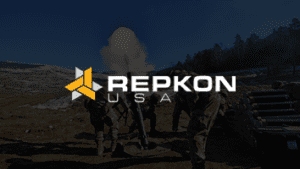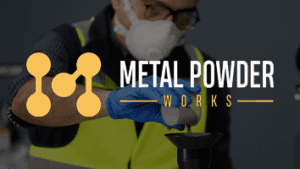Titomic Kinetic Fusion™ set to revolutionize high-performance pressure vessel manufacturing in collaboration with Northrop Grumman.
HUNTSVILLE, AL, April 16, 2025
Titomic Limited (ASX: TTT) (‘Titomic’ or ‘Company’), a global leader in Titomic Kinetic Fusion™ cold spray additive manufacturing, is excited to announce its collaboration with Northrop Grumman to develop and manufacture high-performance pressure vessels. This work is a pivotal step in Titomic’s strategic shift toward high-value collaborations in aerospace and defense, demonstrating its commitment to delivering integrated solutions for mission-critical components.
The collaboration leverages expertise in Titomic Kinetic Fusion™ cold spray systems and Northrop Grumman’s leadership in aerospace and defense, with a shared goal of enhancing the performance, durability, and significantly reducing the production schedule of critical pressure vessels. This is an initial concept development study inclusive with part production for testing to prove out for future efforts.
Titomic’s proprietary cold spray technology offers unmatched flexibility and efficiency in creating high-performance components. By eliminating the need for high-heat methods, this innovative process enhances material properties, reduces lead times, and enables complex geometries crucial for the aerospace and defense sectors. Pressure vessels, which are vital in industries like aerospace, defense, energy, and industrial applications, will benefit greatly from the enhanced strength and performance characteristics enabled by cold spray technology.
This collaboration underscores Titomic’s commitment to redefining the manufacturing landscape for critical aerospace and defense components. By leveraging localized production capabilities in the United States, Titomic is strategically positioned to meet growing demands and address global supply chain challenges. The pressure vessel market alone represents a multi-billion-dollar opportunity, and this collaboration allows both companies to capitalize on its potential.
Titomic CEO, Jim Simpson, commented on the collaboration: “We are thrilled to collaborate with Northrop Grumman to develop advanced pressure vessels using our unique Titomic Kinetic Fusion™ technology. This collaboration represents a significant step in overcoming the supply chain challenges for manufacturing of critical components for the defense industry.”
Neil Matthews AM, Senior Technical Fellow at Titomic, commented: “This collaboration with Northrop Grumman showcases the potential of cold spray technology to overcome traditional manufacturing limitations. By enabling the production of high-strength components with reduced material waste and reduced lead times, we are setting a new benchmark for aerospace and defense manufacturing. This project exemplifies the innovation that drives Titomic’s engineering efforts.”
Together, Titomic and Northrop Grumman are set to redefine the manufacturing of pressure vessels, offering a new era of durability, efficiency, and innovation that meets the demands of modern industries. This collaboration is the first in a series of initiatives that will position Titomic as a leader in the global defense and aerospace manufacturing ecosystem. Titomic is expanding its reach, diversifying its applications, and paving the way for next-generation manufacturing solutions across multiple industries.
INVESTOR CONTACT
Geoff Hollis
Titomic Chief Financial Officer
P: +61 438 168 008
E: [email protected]
MEDIA CONTACT
Dr. Patricia Dare
President, USA
P:+1 408 306 4975
E: [email protected]
Ready to revolutionise your manufacturing?
Frequently asked questions
TKF costs significantly less than traditional manufacturing methods for the following reasons:
- It doesn’t need large-scale tooling (such as vacuum moulds) to produce parts. A simpler setup means reduced costs.
- It turns metal powder to part in just hours, by depositing the powder at supersonic speed to rapidly build up parts layer by layer – so there’s no need for casting or forging. Plus, the part you need is the part you make, saving time and materials.
- It keeps material costs down. For example, when we manufactured a 1.2m titanium ring, the ‘as built’ weight was 60kg while the final part weighed 56kg – representing a ‘buy to fly’ ratio of 1.08 with material costs of only A$3,000.
Our compact cold spray systems cost considerably less than traditional repair and resurfacing methods for the following reasons:
- You can resurface and refurbish parts in just minutes.
- Materials often cost less than $300.
- You no longer need to outsource repairs. For example, a shower floor manufacturer quoted $40,000 to ship a damaged resin transfer moulding tool overseas spent just $3,000 repairing it with Titomic’s D523 system – as well as saving months of downtime.
We’ve achieved typical density rates of 90-95% and over 99% when enhanced by post-processing.
If needed, it’s also possible to create less dense, more porous coatings for grip, abrasion, chemical processing and more through process optimisation, powder manipulation, and post-processing parameters.
Generally, you can achieve mechanical properties similar to casting and forging. While some parts may need to be processed with a heat treatment to make them more ductile, we can tailor process variables to meet your specific needs – a clear advantage compared to other methods.
It depends on what parts you need, as well as the mechanical properties the application requires. However, generally parts created with TKF will need some post-processing heat treatment.
Cold spray doesn’t require heat to melt the materials being sprayed. This is different to traditional metal spraying methods like welding or thermal spraying, which use heat to melt the material before it’s applied to a surface.
Instead, a high-pressure gas is used to accelerate tiny metal particles (which are usually less than 50 micrometres in size) to supersonic speeds. This creates heat through kinetic energy, when the particles collide with the surface of the object being sprayed.
Cold spray works by exploiting the kinetic energy of tiny metal particles. Low-to-high pressure gas is used to accelerate the particles (which are usually less than 50 micrometres in size) to supersonic speeds. These are then sprayed onto a surface where they compress and deform to create a cohesive bond.
This results in a strong, dense coating that can be used for a variety of applications – such as repairing damaged parts, improving the surface properties of a material, or creating new, complex shapes.
There are many metals that can be used in our cold spray systems. This includes aluminium, copper, nickel, titanium, stainless steel, Inconel, and more.
Since these all have different characteristics – such as strength, ductility, and resistance to corrosion – the chosen metals will depend on the application, as well as the properties needed for the final product.
Some metals may also be easier or more difficult to cold spray, depending on their melting point, ductility, and other factors.
What makes TKF so beneficial is that it can fuse dissimilar metals together. This means you can leverage the strengths of multiple metals in a single, monocoque part. For instance, you can fuse copper to titanium, nickel to cast iron, and much more.
Cold spray can be used on a variety of surfaces. This includes metals, ceramics, plastics, and composites.
The process is particularly useful for repairing worn or damaged metal parts, as it can restore the surface to its original shape and properties without causing distortion or weakening the material.
Our cold spray systems can also be used to add new features or properties to a surface, such as improved wear resistance, corrosion resistance, or thermal properties.
You can even use it to create new shapes or structures that would be difficult or impossible to achieve with traditional manufacturing methods.
- Aerospace: Repair and restore worn or damaged aircraft parts (such as engine blades, landing gear, and wing components), or add corrosion-resistant coatings to aircraft surfaces.
- Automotive: Repair and restore worn or damaged engine components (such as pistons, cylinder heads, and crankshafts), or add wear-resistant coatings to automotive parts.
- Marine: Repair and restore worn or damaged marine components (such as propellers, shafts, and rudders) or add corrosion-resistant coatings to marine structures.
- Oil & gas: Repair and restore corrosion and wear (such as shafts, bearings, piping, and valves).
- Electronics: Add conductive coatings to electronic components (such as circuit boards and antennas), as well as repair and restore electronic devices.
- Manufacturing: Create new shapes or features on metal parts (such as textured surfaces or complex geometries), or add wear-resistant coatings to industrial components (such as machine tools and moulds).



